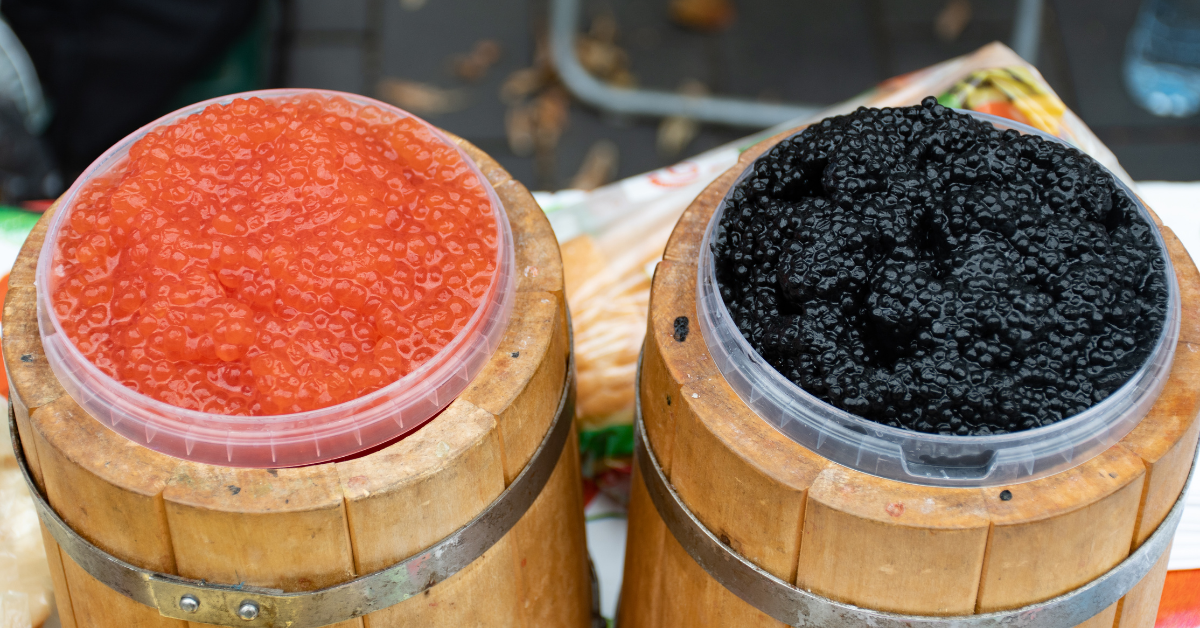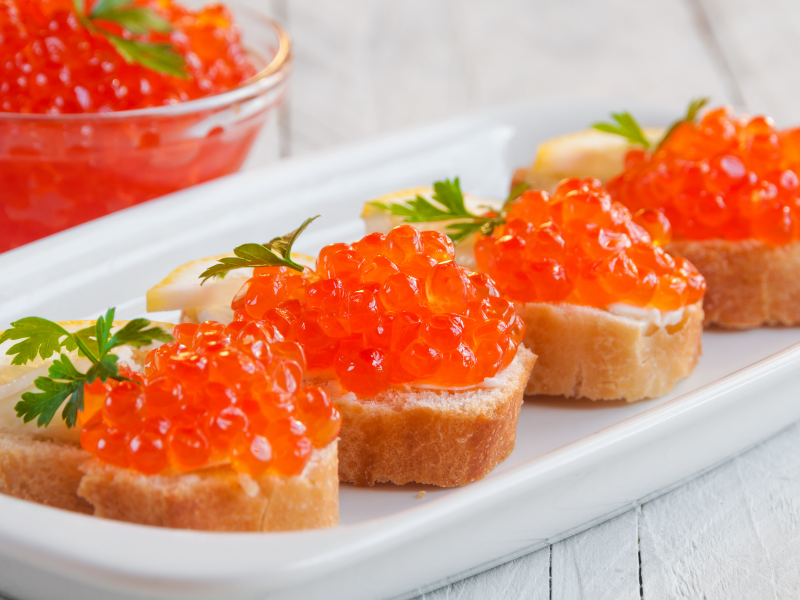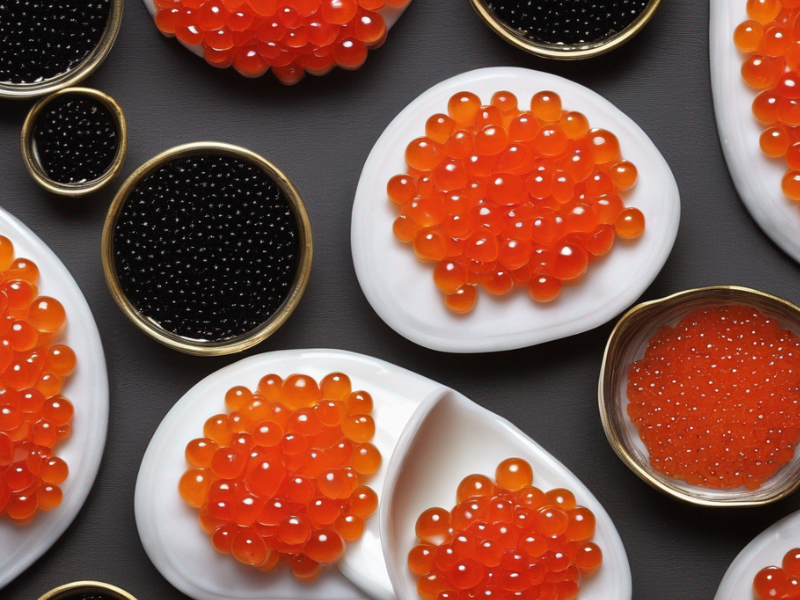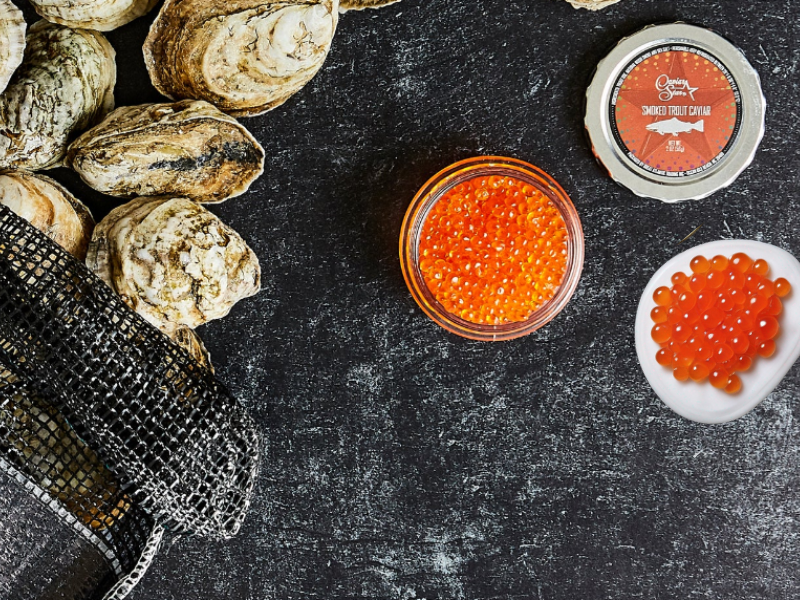
The height of elegance - caviar elicits images of indulgence.
Its velvety texture yields a refined and subtle nuttiness, prized around the world.
Yet the salty pop of trout roe provides its own affordable decadence. Though both are fish eggs harvested before fertilization, caviar and trout roe are different.
Explore the comparisons between these two roe delicacies—from bold brininess to flawless texture, nutrition to price, and best culinary uses.
Discover the five unique things that set caviar and the trout roe apart!
What is Caviar?

Caviar is a luxury delicacy consisting of salt-cured eggs harvested from sturgeon fish. The term "caviar" is traditionally associated with roe from Caspian Sea sturgeon species such as beluga, sevruga, and ossetra. Prized for its delicate texture, nuanced flavor, and rich color, caviar is often enjoyed on its own or used as a sophisticated garnish in gourmet cuisine.
What is Trout Roe?

Trout roe, or trout caviar, refers to the eggs harvested from trout fish. These eggs are noted for their larger size compared to regular fish roe, boasting a distinctive orange color that can range from a bright, fiery hue to a more subdued, amber tone. The flavor profile of trout roe is unique, offering a sweet, grassy flavor. This flavor is less briny than that of caviar, providing a fresh, clean taste.
Five Unique Differences Between Caviar and Trout Roe

1. Taste Profile
Caviar, with its refined, nutty, buttery flavor, is savored by connoisseurs worldwide. On the other hand, trout roe brings forward a sweet, somewhat grassy taste that is less briny than its counterparts. The flavor of caviar can vary depending on the species, while trout roe maintains a consistent, yet distinctive taste.
2. Texture and Mouthfeel
Caviar is known for its velvety texture, resulting from its small eggs, which pop delicately when eaten. The thin membranes of these eggs release a rich, savory flavor instantly. Conversely, trout roe has a slightly firmer texture with a pop that's more pronounced. The larger eggs of trout roe are encased in slightly tougher membranes, leading to a different, yet enjoyable mouthfeel.
3. Nutritional Value
Caviar is a powerhouse of nutrients, boasting high levels of Vitamin B12, magnesium, and antioxidants. It's also rich in omega-3 fatty acids, which can help lower triglycerides and reduce inflammation. Comparatively, trout roe also has health benefits, though it doesn't match up to caviar in terms of protein content, and it carries a slightly higher fat content. However, trout roe is a good source of Vitamin D and selenium. While both provide beneficial nutrients, caviar arguably provides a wider range of health benefits.
4. Price and Accessibility
Caviar is renowned as a luxury item and has an extravagant price range that depends on the species, grade, and availability, which often puts it out of reach for casual consumption. Trout roe, in contrast, is more affordable. The relative abundance and easier harvesting methods for trout make its roe a more accessible choice for those seeking a taste of luxury at a fraction of the cost of caviar.
5. Culinary Uses
Caviar, with its sophisticated taste, is perfect for garnishing gourmet dishes, while the sweet, grassy flavor of trout roe shines as a standalone delicacy or in appetizers. While caviar is best uncooked to retain texture, trout roe can be cooked to enhance its unique flavor. Both add a distinctive charm to culinary creations with their contrasting flavors and textures.
White Stone Oyster's Selection of Caviar and Trout Roe

The White Stone Oysters team is proud to provide premium caviar and trout roe, each possessing a refined flavor that exemplifies the delicate art of roe production. We suggest pairing these exquisite roe products with our fresh, succulent oysters to create an indulgent, gastronomic adventure that will tantalize your taste buds.
Frequently Asked Questions
Is caviar healthier than trout roe?
Caviar and trout roe both have their own health benefits, but caviar typically comes out ahead due to its wider range of nutrients. It's rich in Vitamin B12, magnesium, antioxidants, and omega-3 fatty acids. While trout roe also provides beneficial nutrients, including Vitamin D and selenium, it doesn't quite match the nutritional density of caviar.
Can I substitute trout roe for caviar in recipes?
Absolutely! Trout roe can serve as a viable substitute for caviar in recipes. Despite its slightly grassier, sweeter flavor and more pronounced pop, it beautifully complements a variety of dishes, adding both a visual and flavor burst, especially when used as a garnish or accent. Many people actually prefer trout roe to caviar.
How should I eat caviar or trout roe for the first time?
For your first taste of caviar or trout roe, consume a small amount plain using a non-metallic spoon to avoid taste interference. Allow the roe to burst on your tongue, savoring the unique flavor. After this initial taste, try them on lightly buttered toast or alongside crème fraîche. Remember, let the delicate roe flavors shine, so avoid pairing with strong flavors initially.
← Older post Newer post →
